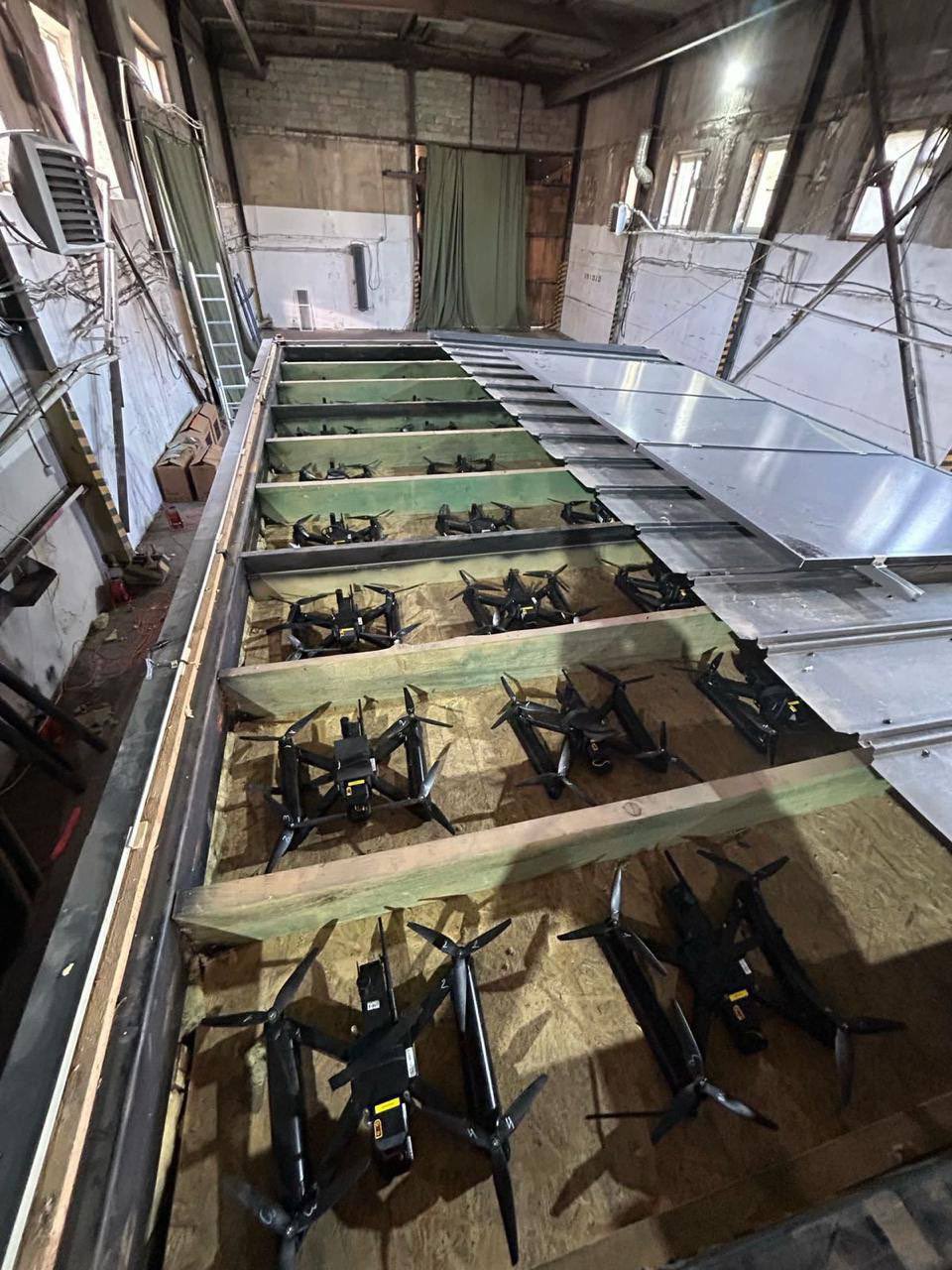In a landmark escalation of the ongoing war, Ukraine’s Security Service (SBU) has carried out a complex and highly coordinated drone strike operation deep inside Russian territory, crippling key elements of Russia’s strategic aviation. Codenamed “Web,” the mission reportedly took over 18 months to plan and was executed with surgical precision on June 1, 2025, targeting four major Russian air bases and destroying 41 aircraft, including nuclear-capable strategic bombers and an A-50 airborne early warning aircraft.
The attack relied on first-person-view (FPV) drones, ingeniously concealed in mobile wooden containers disguised as commercial truck loads. These containers were fitted with remote-controlled roofs that opened at pre-scheduled times, releasing swarms of drones directly from Russian soil. Photos released by the SBU show rows of drones packed inside these containers, ready for launch, with additional units stacked nearby for rapid deployment.
Struck airfields include Belaya Air Base in Irkutsk Oblast, Olenya in Murmansk Oblast, Diaghilev in Ryazan Oblast, and Ivanovo in Ivanovo Oblast. Among the high-value targets hit were Tu-95 and Tu-22M3 bombers—both known for their long-range missile strike capabilities—as well as a rare A-50 AWACS aircraft, valued at an estimated $350 million. The A-50 is one of fewer than ten such aircraft in the Russian arsenal and plays a vital role in battlefield surveillance and coordination.
Sources familiar with the operation confirmed that President Volodymyr Zelensky and SBU Chief Vasyl Malyuk personally oversaw its planning and execution. The strategic reach and complexity of the operation mark a new chapter in Ukraine’s drone warfare capabilities, demonstrating the ability not only to penetrate deep into enemy territory but to do so with pinpoint accuracy and devastating results.
Belaya Air Base, which has hosted nuclear-capable bombers since the late 1960s, was one of the most heavily damaged targets. It serves as a central node for Russia’s Long-Range Aviation forces. Online footage, yet to be officially verified, shows massive fires and explosions on its runways, purportedly involving several burning Russian bombers.
The timing of the strike coincides with an increasing reliance by both sides on drone technology. While Russia has employed FPV drones like the plywood-based Molniya to attack Ukrainian positions, Ukraine has reverse-engineered similar systems and adapted them for large-scale strategic operations. Operation “Web” is the most significant example yet of Kyiv turning asymmetric technology into a strategic weapon.
This mission not only underscores Ukraine’s growing technological edge but also presents a serious challenge to Russia’s military doctrine, which has so far depended on relocating strategic bombers to air bases presumed out of Ukrainian range. That assumption has now been shattered.
As the war enters a new phase, the use of drones to deliver deep-strike capabilities is reshaping the modern battlefield. Operation “Web” sends a clear signal: Ukraine can now reach the heart of Russian military infrastructure—and it intends to do so.













